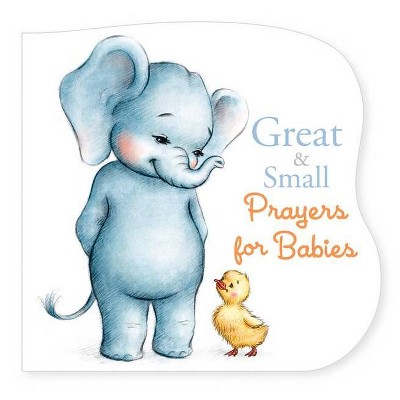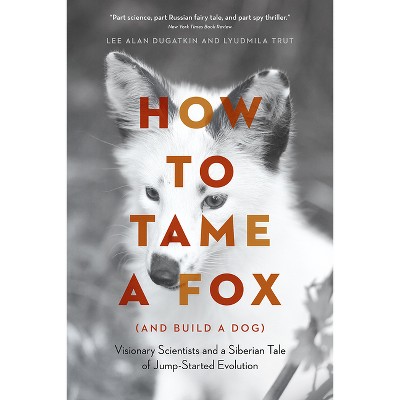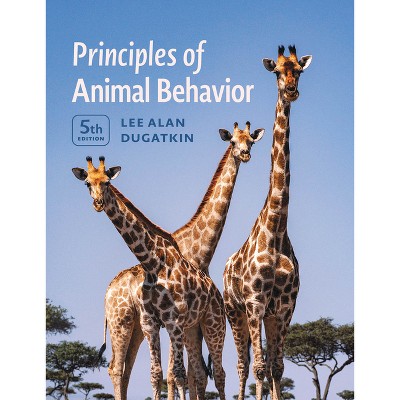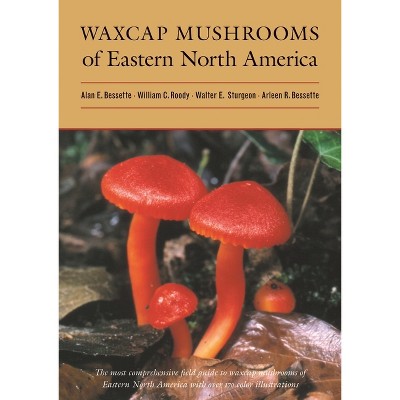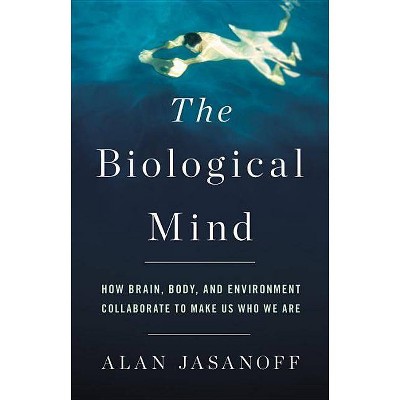Sponsored

Dr. Calhoun's Mousery - by Lee Alan Dugatkin (Hardcover)
$27.50
In Stock
Eligible for registries and wish lists
Sponsored
About this item
Highlights
- "Brilliant. . . .
- About the Author: Lee Alan Dugatkin is an evolutionary biologist and historian of science in the Department of Biology at the University of Louisville.
- 240 Pages
- Science, Life Sciences
Description
About the Book
"It was the strangest of experiments. What began as a utopian environment, where mice had sumptuous accommodations, all the food and water they could want, and were free from disease and predation, turned into a mouse hell. Science writer and animal behaviorist Lee Alan Dugatkin reintroduces readers to the bizarre and compelling work of rodent researcher John Bumpass Calhoun. In this enthralling tale of Calhoun and his work, Dugatkin shows how an ecologist-turned-psychologist-turned-futurist became a science rock star embedded in the culture of the 1960s and 1970s, courted by city planners, written about in everything from Tom Wolfe's hard-hitting novels to the children's book Mrs. Frisby and the Rats of NIMH, invited to meetings with the Royal Society and the Pope, and taken seriously when he proposed a worldwide cybernetic brain. Readers see how Calhoun's experiments-rodent apartment complexes like "Mouse Universe 25"-led to his concept of "behavioral sinks" with real effects on public policy discussions of his day. Overpopulation in Calhoun's mouse complexes led to loss of sex drive, absence of maternal care, and a population of automatons, in Calhoun's words, "capable only of the most simple behaviors compatible with physiological survival." Calhoun-and the others who followed his work-saw this mouse population collapse as a harbinger for an overpopulated human world. Calhoun saw future rodent experiments on culture and cooperation as one solution. Including previously unpublished archival research and informed by interviews with Calhoun's family and former colleagues, Dugatkin offers a probing, fast-moving account of an intriguing scientific figure and in so doing, examines the changing nature of scientific research and the lasting impact of Dr. Calhoun's mousery"--Book Synopsis
"Brilliant. . . . An absorbing read and a potent lesson in moral behavior--both of rodents and of humans."--Deborah Blum, Pulitzer Prize-winning author of The Poison Squad - "A fascinating read about an immensely influential scientist."--Robert M. Sapolsky, author of the New York Times-bestseller Determined - "Stimulating scientific history. . . . Colorful accounts. . . . This fascinates."--Publishers Weekly A bizarre and compelling biography of a scientist and his work, using rodent cities to question the potential catastrophes of human overpopulation. It was the strangest of experiments. What began as a utopian environment, where mice had sumptuous accommodations, had all the food and water they could want, and were free from disease and predators, turned into a mouse hell. Science writer and animal behaviorist Lee Alan Dugatkin introduces readers to the peculiar work of rodent researcher John Bumpass Calhoun. In this enthralling tale, Dugatkin shows how an ecologist-turned-psychologist-turned-futurist became a science rock star embedded in the culture of the 1960s and 1970s. As interest grew in his rodent cities, Calhoun was courted by city planners and his work was reflected in everything from Tom Wolfe's hard-hitting writing to the children's book Mrs. Frisby and the Rats of NIMH. He was invited to meetings with the Royal Society and the pope and taken seriously when he proposed a worldwide cybernetic brain--a decade before others made the internet a reality. Readers see how Calhoun's experiments--rodent apartment complexes like "Mouse Universe 25"--led to his concept of "behavioral sinks" with real effects on public policy discussions. Overpopulation in Calhoun's mouse (and rat) complexes led to the loss of sex drive, the absence of maternal care, and a class of automatons that included "the beautiful ones," who spent their time grooming themselves while shunning socialization. Calhoun--and those who followed his work--saw the collapse of this mouse population as a harbinger of the ill effects of an overpopulated human world. Drawing on previously unpublished archival research and interviews with Calhoun's family and former colleagues, Dugatkin offers a riveting account of an intriguing scientific figure. Considering Dr. Calhoun's experiments, he explores the changing nature of scientific research and delves into what the study of animal behavior can teach us about ourselves.Review Quotes
"[Calhoun] is treated as an eccentric visionary, whose insights might still have something to teach us not just about rats, but about ourselves."-- "London Review of Books"
"An excellent addition to the libraries of those interested in the history of population science, animal behavior, and animal research applications to humans. As Dugatkin demonstrates, Calhoun is an endlessly fascinating character who consistently crossed disciplinary boundaries, even trying his hand at science fiction writing. Thus, his life story will prove stimulating for academic and popular audiences with wide-ranging interests. Overall, Dr. Calhoun's Mousery is a significant contribution to the history of animal behavioral science and an effective retelling of the life and work of John B. Calhoun."-- "H-Environment"
"Dr. Calhoun's Mousery has more detail linking Calhoun's life to popular culture at the time, noting almost every moment when his ideas were alluded to in songs, television spots, magazine articles, and more. Written by a biologist, this book also amply describes Calhoun's struggles to find lab space and funding commensurate with his visions."-- "American Biology Teacher"
"Dugatkin, an evolutionary biologist specializing in animal behavior, charts the trajectory of Calhoun's research on the relationship between population dynamics and social behavior from his graduate days through his retirement from the National Institute of Mental Health. Dugatkin details Calhoun's research questions, experimental designs, and methodology; he also highlights Calhoun's interdisciplinary network and ability to synthesize ideas from ecology, psychology, and animal behavior. Throughout the book, Dugatkin makes clear his opinion that, by extrapolating from lab animals to humans, Calhoun went too far. In the conclusion, he observes that, whereas Calhoun's research occasionally surfaces in popular media today, it has nearly disappeared from scientific literature. Recommended."-- "Choice"
"Dugatkin's new book, Dr. Calhoun's Mousery, is a delightful romp through this cultural terrain, the rapidly evolving science of the time, and Calhoun's own writings about his experiments. Dugatkin ponders, too, the eccentric and visionary aspects of Calhoun's mind."--Michele Pridmore-Brown "Times Literary Supplement"
"It's time to scratch off another item from the "what makes humans unique" list, ' concludes biologist Dugatkin. Animals, too, have complex social networks--as his entertaining book about species around the world demonstrates. A vampire bat (Desmodus rotundus), for instance, shares more blood with a starving one if the latter had been generous with food when the former was hungry. Satellites and other technologies monitor such networks at a resolution inconceivable when Dugatkin began doing research in the 1980s."--Andrew Robinson "Nature"
"A wild and detailed ride about a most controversial figure who became a science rock star."--Marc Bekoff "Psychology Today"
"A compelling biography about a groundbreaking scientist and his controversial work, using rodent cities--rodentopias--to identify and examine the potential catastrophes that might befall human overpopulation. . . . Dugatkin does an excellent job of investigating, documenting and writing about Dr. Calhoun's life and work. . . . Drawing on previously unpublished archival research and interviews with Calhoun's family and former colleagues, Dugatkin offers a riveting account of an intriguing scientific figure. Considering Dr. Calhoun's experiments, he explores the changing nature of scientific research and delves into what the study of animal behavior can teach us about ourselves."--GrrlScientist "Forbes"
"At first, scientists just wanted to figure out the best way to kill these pests. Then they decided that studying rat society could reveal the future of our own. . . . Calhoun came up with a new term to describe the process he had witnessed. The rats, he said, had fallen into a 'behavioral sink.' . . . Whether or not Calhoun proposed 'an early version of the world wide web, ' as Dugatkin claims, the Internet has certainly linked 'more and more individuals in a common communication network.' And, it could be argued, our increasingly intelligent laptops and cell phones count as 'thinking prostheses.' But where, oh where is the compassion? Facebook, Yik Yak, Twitter, Twitch--each had a sunny, expansive phase, followed by a descent into flaming, catfishing, and troll wars. To the extent that Calhoun's rats have any sociological relevance, it would seem to be in the mirror world of the Web. What, after all, could be a better description of X these days than a 'behavioral sink?'"--Elizabeth Kolbert "The New Yorker"
"Biologist Dugatkin's deeply researched biography traces Calhoun's career with close attention to the intellectual currents that directed the mouse work. Since Calhoun's death, subsequent currents have swept a way much of what he accomplished."-- "Natural History"
"Can we monitor rats' behavior and then learn anything about ourselves? Well we sure can, but we may not like what it tells us. There have been some famous experiments about all of this and our next guest has written about that actually. [Dugatkin] is . . . professor in the Department of Biology at the University of Louisville and the author of Dr. Calhoun's Mousery: The Strange Tale of a Celebrated Scientist, a Rodent Dystopia, and the Future of Humanity."-- "Mornings with Simi on 980 CKNW"
"The problem was overpopulation; the diagnostician was John B. Calhoun, a pioneering student of animal behavior and ecology and the subject of Dugatkin's well-turned biography. . . . Dugatkin . . . evokes nicely the 'eclectic, unorthodox' trajectory of Calhoun's career, in which he ranged with thrilling freedom across disciplines. . . . [He] animates the bureaucratic details of Calhoun's career with dry humor. . . . And for all of the inspiration his lab work offered to city planners, prison reformers, artists and others, its scientific legacy today is slight. Partly this is because people worry less about overpopulation, but mostly--as Dugatkin notes only in the epilogue, as if gently rousing readers from a dream--it's because the eye-catching phenomena Calhoun found in captive populations have never been documented in the wild. Behavioral sinks and beautiful ones are more suggestive metaphors than hard science, it seems, an uneasy triumph of story over data."--Timothy Farrington "The Wall Street Journal"
"Though labeled an animal ecologist, Calhoun worked across disciplines and incorporated science, math, urban planning, economics, and sociology into his research. . . . Few academic fields have rock stars. Yes, there were Malthus, Darwin, and Skinner, but Calhoun's national and international fame in the 1960s and 1970s was truly dazzling. . . . Dugatkin wrote Dr. Calhoun's Mousery to introduce new generations to a largely forgotten scientist who, although engaging in somewhat bizarre research, did so with a certain je ne sais quoi and left excellent notes concerning his work."-- "Washington Independent Review of Books"
"Only publishing . . . could contrive to drop two excellent books about Calhoun's life and work into the same cycle. . . . I prefer [Dr. Calhoun's Mousery]. Its narrative is more straight-forward, and the author gives greater weight to Calhoun's later career."--Simon Ings "The Spectator"
"A new biography nearly as quirky as its subject. . . . Dugatkin--an evolutionary biologist, science historian and prolific author who sifted through thousands of pages at the Calhoun archive in Bethesda--is an admirably thorough researcher. . . . Calhoun belonged to a generation of scientists who had no compunctions about straying from their disciplinary lane. He wrote poetry and sci-fi and consulted on humane prison design. Dugatkin captures the grand ambition of a man who gazed at rodents and saw the universe."--Ben Goldfarb "Scientific American"
"This stimulating scientific history from Dugatkin . . . recaps psychologist John B. Calhoun's yearslong experiments on mice and rats in the 1960s and '70s. . . . Dugatkin offers colorful accounts . . . and descriptions of the exigencies of the rat-race within them intrigue. . . . This fascinates."-- "Publishers Weekly"
"Dr. Calhoun's Mousery is a brilliant reminder, from biologist and author Dugatkin, of how relevant some research remains even decades later. This story of a fascinating, complicated psychologist and his innovative, insightful, troubling studies of overpopulation in rodents is an absorbing read and a potent lesson in moral behavior--both of rodents and of humans."--Deborah Blum, Pulitzer Prize-winning author of "The Poison Squad: One Chemist's Single-Minded Crusade for Food Safety at the Turn of the Twentieth Century"
"This engagingly written book revives the life and work of the almost-forgotten behavioral population biologist John Calhoun, whose discoveries on the crowding syndrome and social pathology in rodents had at that time far-reaching interdisciplinary implications concerning the consequences of human population growth. This book is a masterpiece of critical, scholarly biography and historical analysis of a field in behavioral biology."--Bert Hölldobler, coauthor of the Pulitzer Prize-winning "The Ants"
"John Calhoun famously showed that rodential 'society' degenerates horrendously when rodents live at high densities. Politicians, urban planners, pundits, and criminologists then seized these findings, often distorting them when extrapolating to supposed inevitabilities about urban humans. Dugatkin gives us the life of Calhoun himself―often eccentric, with wildly expansive ideas, unclear as to just how much he wanted them interpreted imprudently. A fascinating read about an immensely influential scientist."--Robert M. Sapolsky, author of the New York Times-bestseller "Determined: A Science of Life without Free Will"
"William Blake saw the world in a grain of sand. John Calhoun saw it in a mousery--a utopian apartment complex built for mice! Dugatkin's brilliant, fast-paced account of Calhoun's research takes us on a whirlwind tour with stops along the way at the Royal Society in London, the Vatican, and Washington, DC. Dugatkin is both learned and lively, and his book is irresistible."--Edward Dolnick, New York Times-best-selling author of "The Clockwork Universe" and "The Writing of the Gods"
About the Author
Lee Alan Dugatkin is an evolutionary biologist and historian of science in the Department of Biology at the University of Louisville. Among his many books, he is coauthor of How to Tame a Fox (and Build a Dog) and the author of Mr. Jefferson and the Giant Moose, Power in the Wild, and, most recently, The Well-Connected Animal, all also published by the University of Chicago Press.Dimensions (Overall): 8.6 Inches (H) x 5.8 Inches (W) x 1.1 Inches (D)
Weight: 1.2 Pounds
Suggested Age: 22 Years and Up
Number of Pages: 240
Genre: Science
Sub-Genre: Life Sciences
Publisher: University of Chicago Press
Theme: Ethology (Animal Behavior), Zoology
Format: Hardcover
Author: Lee Alan Dugatkin
Language: English
Street Date: October 3, 2024
TCIN: 1006101300
UPC: 9780226827858
Item Number (DPCI): 247-50-1804
Origin: Made in the USA or Imported
If the item details aren’t accurate or complete, we want to know about it.
Shipping details
Estimated ship dimensions: 1.1 inches length x 5.8 inches width x 8.6 inches height
Estimated ship weight: 1.2 pounds
We regret that this item cannot be shipped to PO Boxes.
This item cannot be shipped to the following locations: American Samoa (see also separate entry under AS), Guam (see also separate entry under GU), Northern Mariana Islands, Puerto Rico (see also separate entry under PR), United States Minor Outlying Islands, Virgin Islands, U.S., APO/FPO
Return details
This item can be returned to any Target store or Target.com.
This item must be returned within 90 days of the date it was purchased in store, shipped, delivered by a Shipt shopper, or made ready for pickup.
See the return policy for complete information.



